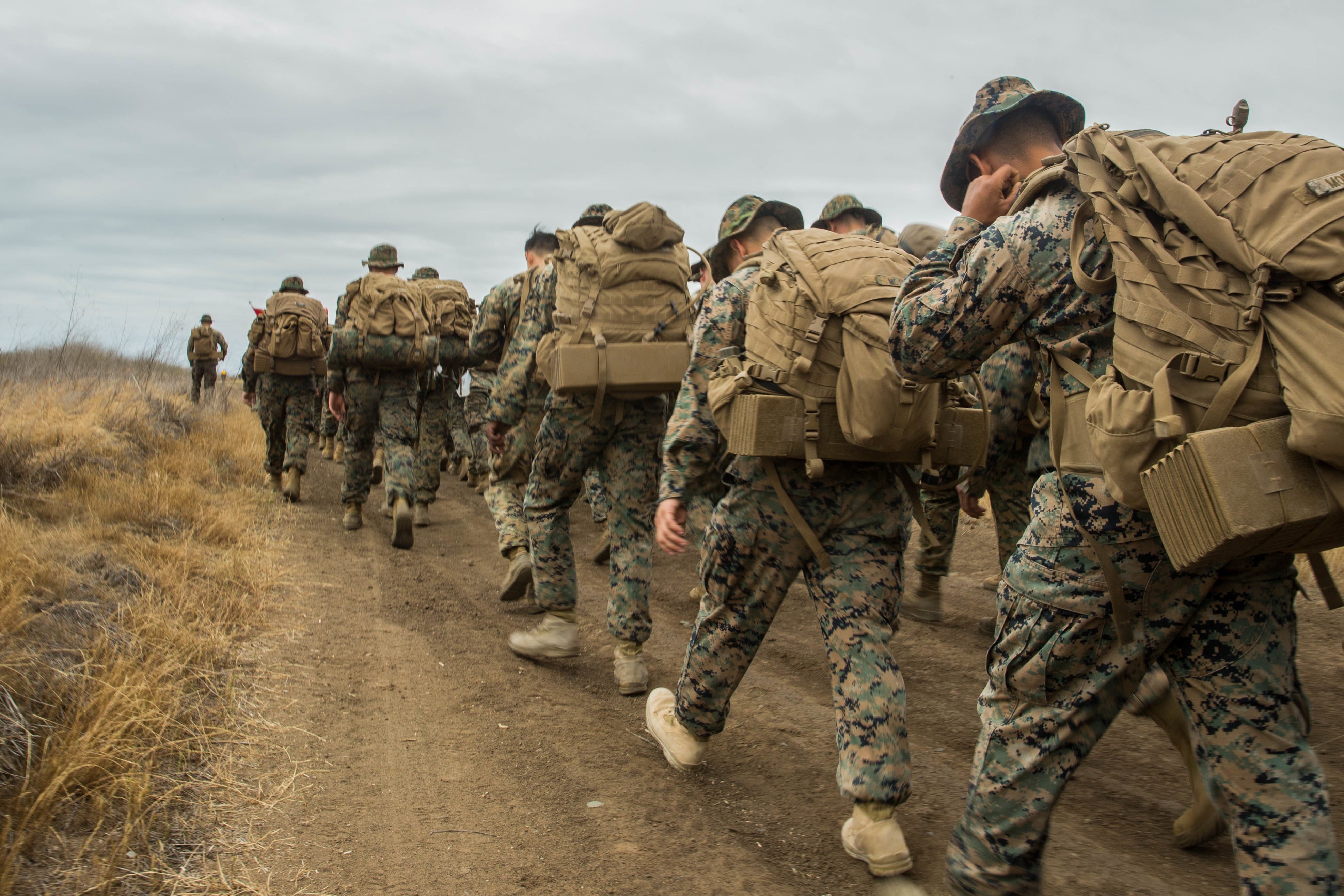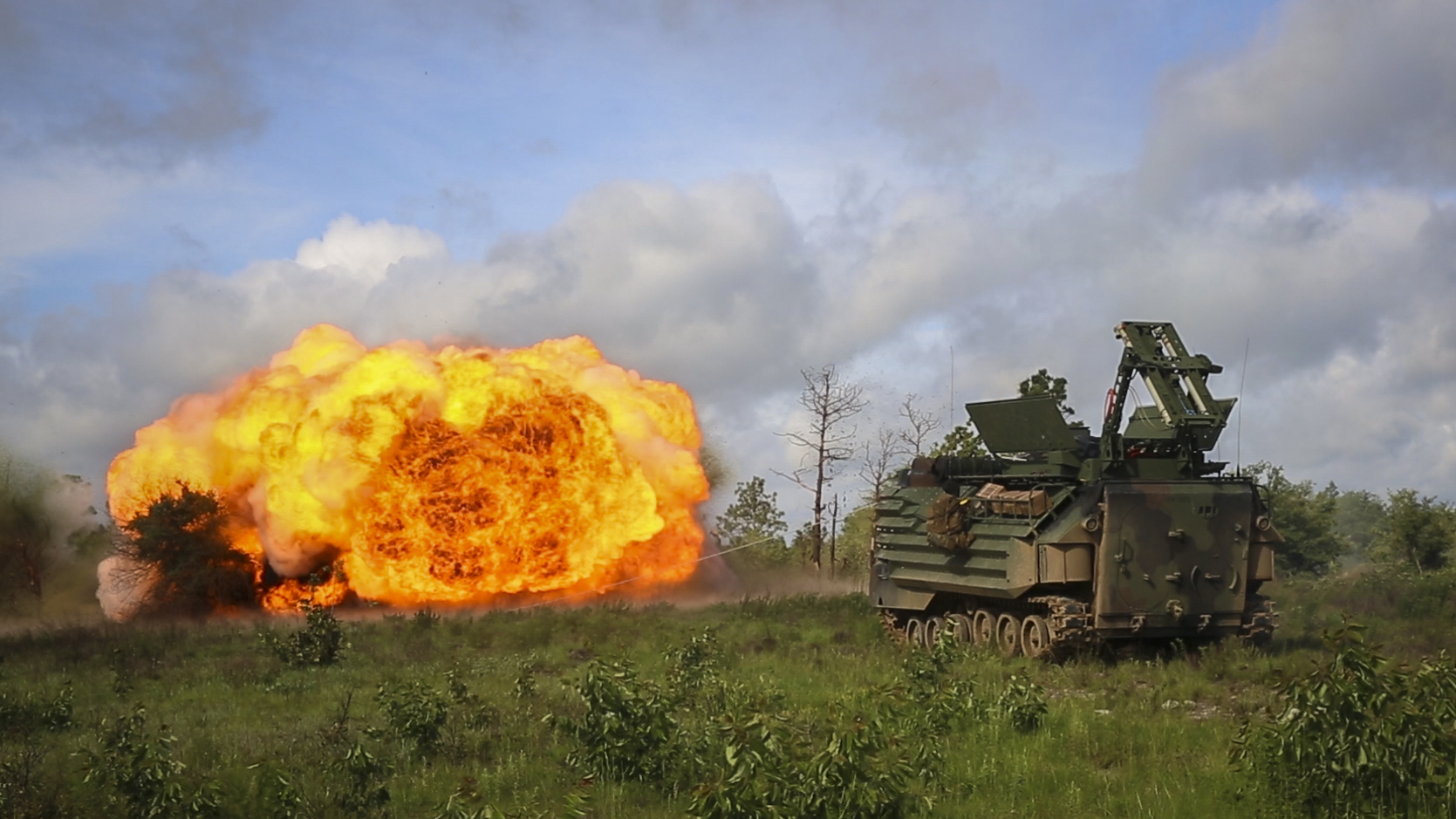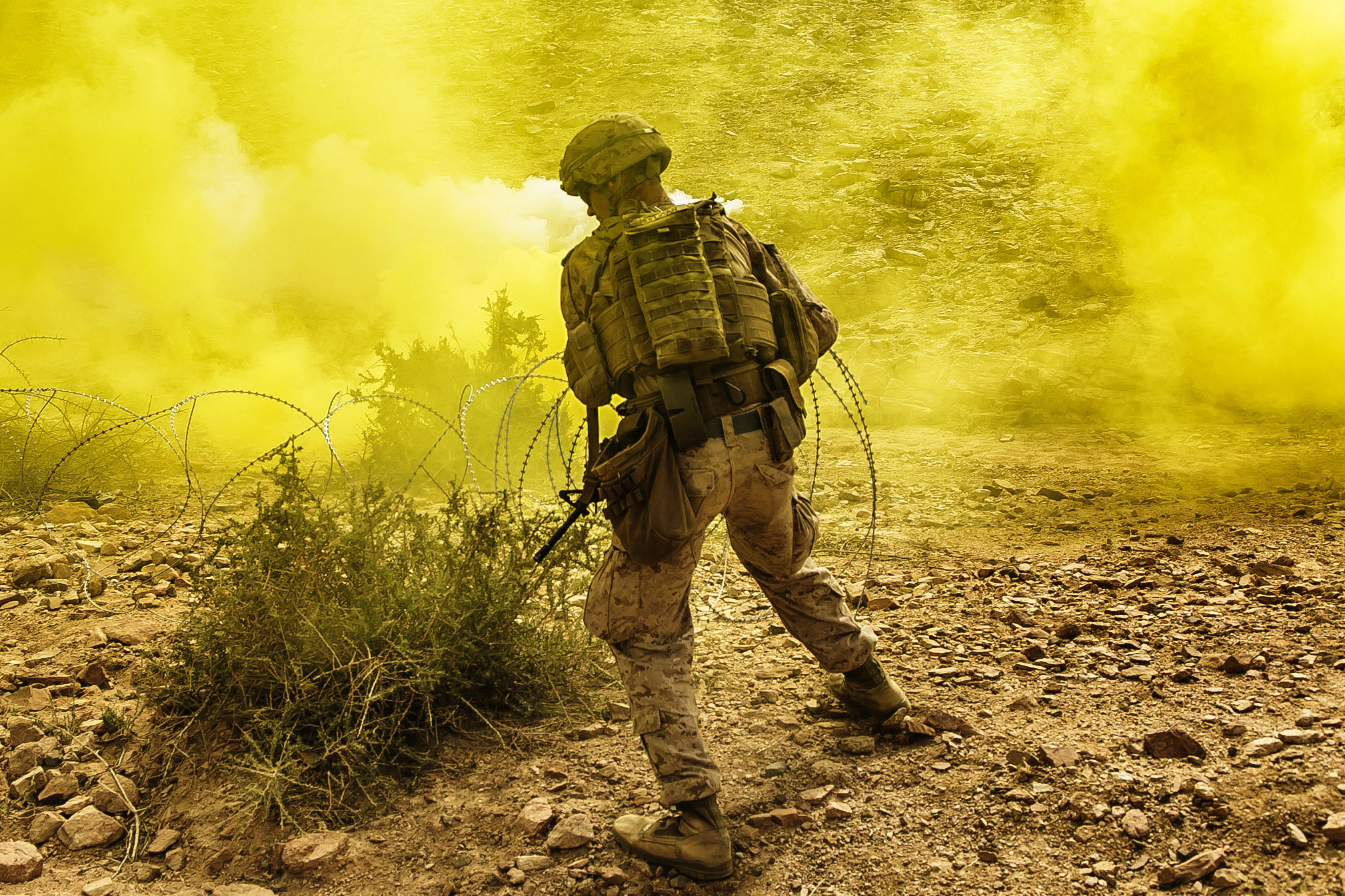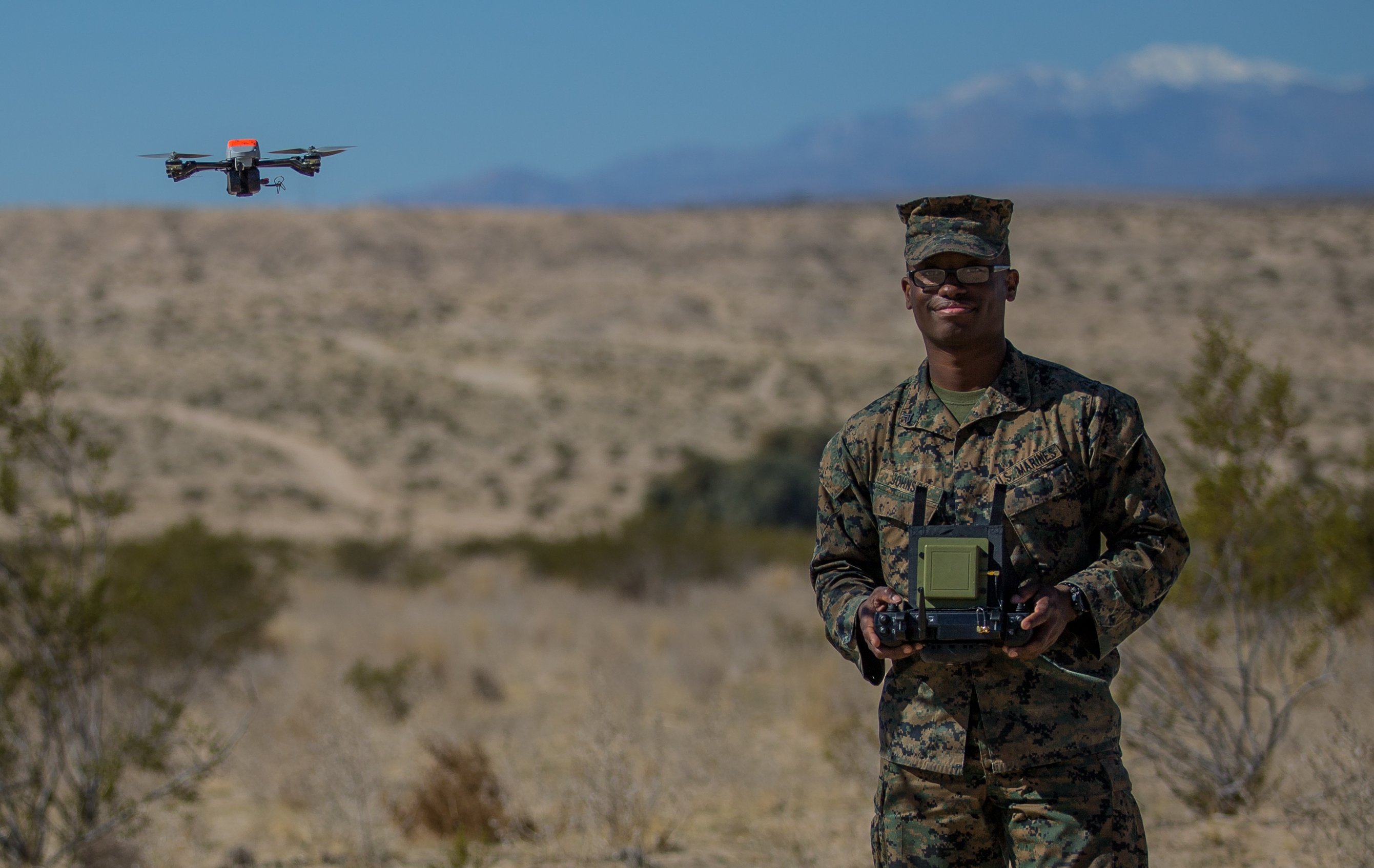
WASHINGTON, D.C. — The Marine Corps wants to focus its continental U.S.-based forces training for a high-end large-scale war, in case a conflict on the Korean Peninsula or elsewhere requires a massive surge force.
Whereas most training over the last decades has focused on smaller-level operations – training for a Marine Expeditionary Unit deploying aboard a three-ship Amphibious Ready Group, or training for a deployment to the Middle East – Marine leadership today wants CONUS forces training for a joint fight that might include 20 warships, Air Force bombers, a hefty Army presence and Marine Reserve units.
“You may see two different MAGTFs (Marine Air-Ground Task Forces) emerging all within the same Marine Corps. There’s the constantly forward-deployed aspect of the Marine Corps on Navy ships that’s going to be inside the adversary’s area, if they decide to light up their systems one day. We have to be the contact and blunt layer. Someone’s got to do the job, and those Marines and amphibious forces – in addition to the rest of the surface navy or subsurface navy and air, cyber – are going to deny the adversary their initial capabilities,” Lt. Gen. Brian Beaudreault, the deputy commandant of the Marine Corps for plans, policies and operations, said at an event cohosted by the Center for Strategic and International Studies and the U.S. Naval Institute.
“We will disrupt their plans. We will buy time and space for decision-makers in Washington that then can make a decision to be able to surge the force from CONUS. So you’re going to see a MAGTF that’s operating inside the contact and blunt layer … that’s got to be survivable and lethal and disruptive, a denying force; and then the rest of the MAGTF that’s coming in from places like Camp Pendleton or Camp Lejeune or Okinawa, assembling at the right place to then serve as part of the surge layer — the war-winning force.”

The “two different MAGTFs” won’t be manned or equipped differently, Beaudreault said, but they will be trained differently. Today, all Marines assigned to a Marine Expeditionary Unit (MEU) train for MEU-type events: humanitarian assistance missions, embassy reinforcements, non-combatant evacuations, recoveries of aircraft and personnel and so on. Land-based Marine units may be trained for counter-terrorism operations or to serve as a quick-reaction force, for example. Instead, Beaudreault wants only the next-to-deploy units focused on that training, with the remainder of the MEUs and Marine forces at home station focused on what it would take to be a surge force in a high-end war.
“The training focus of those back at home versus those forward-deployed should be on major combat operations, fighting at the [Marine Expeditionary Force] level, or at least a [Marine Expeditionary Brigade] level and higher. That’s a different kind of training workup for folks in CONUS than it is for a Marine Expeditionary Unit that’s getting ready to go and do 19 different things in support of a combatant commander,” the deputy commandant said.
Beaudreault told USNI News after the event that the MEUs operating forward would retain their focus on MEU-level and even smaller disaggregated ship-level operations to retain their agility, but the surge force would be “a formation of perhaps 20 to 30 amphibs that are coming forward from CONUS with the war-winning effort along with the Army – that’s two different types of things we’re talking about. It’s all the same Marine Corps. And those battalions and squadrons are interchangeable, as long as they have the opportunities to train.”
While ARG/MEU training would still occur during pre-deployment workups, Beaudreault said the high-end large-scale surge force training would occur in existing large naval exercises like Bold Alligator and Dawn Blitz; in ground-based training events at Twentynine Palms and other ranges; in command post exercises and more.
Another Marine Corps leader, Maj. Gen. David Coffman, the director of expeditionary warfare on the chief of naval operations’ staff (OPNAV N95), also spoke this year about the need to refocus on and practice surge operations.
Still, switching gears and emphasizing the need for trained and ready surge force means deemphasizing something else. Lt. Gen. Robert Walsh, deputy commandant of the Marine Corps for combat development and integration (CD&I), said at the same event that the National Defense Strategy calls for a greater focus on the Indo-Pacific region and its potential for high-end combat and less emphasis on the Middle East and its largely counter-terrorism mission set.
“That allows the Marine Corps to kind of reset some of its capability back where we’ve been heavily focused just on the Middle East. So it does give us some space there to reset some of that force to be able to focus much more so … on higher-end equipping, higher-end training and higher-end manning to go towards the guidance the [National Defense Strategy] is telling us to go towards,” he said.

Lt. Gen. Robert Hedelund, commanding general of II Marine Expeditionary Force (II MEF), said at the event that “if I need to recoup equipment, aircraft and people in order to be able to create readiness for a higher-priority mission in the [National Defense Strategy] and the [National Security Strategy], those Special Purpose MAGTFs are a place I’m going to go to begin to talk about how do we get those back and prepare a different force for a different conflict or a different crisis.”
“We have a lot of folks on the road around the world from II MEF doing the nation’s bidding, and I would like to have more of them at home preparing them for a higher-end competition. We’re working on all that,” he said earlier in the panel discussion.
The Marine Corps currently deploys three Special Purpose MAGTFs: one during hurricane season to Central and South America for partnership-building and disaster-response missions, one to U.S. Central Command to support missions in Iraq and Syria, and one to Europe to support special operators and conduct missions in Africa.

Beaudreault told USNI News after the event that “what we’re trying to do is … lessen the requirement (from combatant commanders) to have more forces back at home station. We’re looking at primarily the number of forces and the type of units we’ve got in Central Command, which has been a big consumer. … We need to, if we want to recover for major combat operations, we need to find a way not only there but also perhaps in other COCOM areas to recover some of the forces if we can.”
He said those Special Purpose MAGTFs have shown “tremendous value” to combatant commanders, but he also spoke of “an institutional refocus on high-end warfighting and all that comes with it.”
Concepts and Gear for High-end Warfare

As the service refocuses to support the National Defense Strategy and other Pentagon-level guidance, Walsh said Marine Corps concepts – primarily Littoral Operations in a Contested Environment (LOCE, pronounce low-key), Expeditionary Advance Base Operations (EABO) and Multi-Domain Battle – will drive Marine training, wargaming, acquisition and other investments.
Hedelund said II MEF is moving forward with the new concepts even ahead of top Navy and Marine Corps leadership formally signing some of them.
“We don’t wait for CD&I to hand off a perfectly formed concept before we begin to play with it. So for instance, we are exploring ways to where we can at least tabletop (EABO) and in terrain that is different from what you might immediately identify as an EABO type of environment – how do we do that in other places around the globe? How would that look if we had to do it? And how might we contest those areas differently than purely a force-on-force type of confrontation?” Hedelund said, referring to EABO’s focus on using advance bases to aggregate, conduct a mission and then disaggregate again before an adversary can find and target them, with a focus on maneuver and deception to avoid a major force-on-force fight.
“At II MEF we’re trying to find slices of these concepts that we can put to work immediately and begin to learn from them now, rather than waiting for everything to be perfected.”
On acquisition, Walsh and Beaudreault rattled off a list of spending priorities that support their emphasis on high-end warfare.

Walsh said information warfare was a clear top priority for the Marine Corps.
“That’s where we see our advantage of operating in all domains: the Marine Corps is a maneuver force, we try to maneuver in all domains and as we look at information warfare we see lots of advantages in that area. So a good bit of that funding increase has gone into areas like signals intelligence, electronic warfare, command and control capability, how do we operate in a degraded area,” Walsh said.
“Our big organizational change we did in that area was standing up … the MEF Information Groups. So it’s not only to put equipping in there, in modernization, but we changed the organization significantly to move in that new operating concept.”
Walsh added that other spending priorities were long-range precision fires, air defense, and command and control. He noted that the Marine Corps got a 7-percent spending increase overall in the Pentagon’s Fiscal Year 2019 request but a 32-percent increase for modernization accounts, showing the service’s seriousness about bringing in new high-end capabilities.
Beaudreault laid out a vision of how emerging technologies might come together to support the Marines’ vision of high-end warfighting:
“If you can be seen, is to be targeted, is to be killed. And so in a place like the Pacific, it’s about distribution of your force, it’s the ability to rapidly aggregate and mass at the time and place of your choosing when necessary, it’s about decoys and deception, it’s about low-observable properties and modernization of our equipment. It’s all of those things. It’s about all-domain access and assuring ourselves across all domains: space, cyber, surface, undersea, land,” he said.
The Marines would then add in a naval strike missile or other extended-range weapons for a naval campaign, and then “you add an unmanned capability into that, an unmanned sensor, an unmanned shooter, a networked force, networked to [the Navy’s Aegis Combat System] – now we’re talking about a very sophisticated high-end fight where we need to maintain dominance, first of all, in the information space, and dominance over the electromagnetic spectrum. If we can do that, it will underpin everything else that we need to do as a force, for command and control, for a ship talking to a land-based system, for a manned-sensor being able to relay through an unmanned sensor back to whatever command and control apparatus might be in control at the time – to include the incorporation of artificial intelligence into our systems, Watson-like capabilities where the pace of decision-making has to move as quickly as the opportunities reveal themselves.”
Beaudreault said the goal of all this modernization and investment into new technologies is to empower the Marines to successfully complete their missions with as little risk to the human as possible.
“At the end of the day for an infantryman, it’s about locating, closing with and destroying the enemy. And how we find them and how we close, with what we close – it may not be a human at all that closes on that enemy, it may not be a human that even sees that enemy – but there’s something that’s going to locate, there’s something that’s going to close with and there’s something that has an ability to finish,” he said.
“So I don’t know if the mission changes, but the manner in which we can execute that mission at less cost to the human is really what we’re after.”





